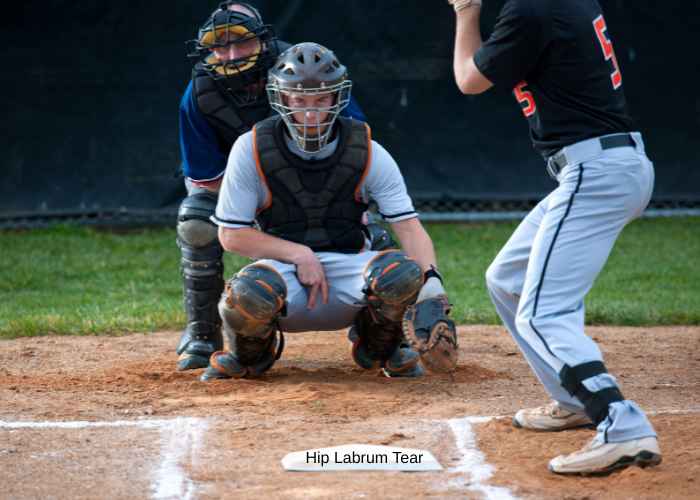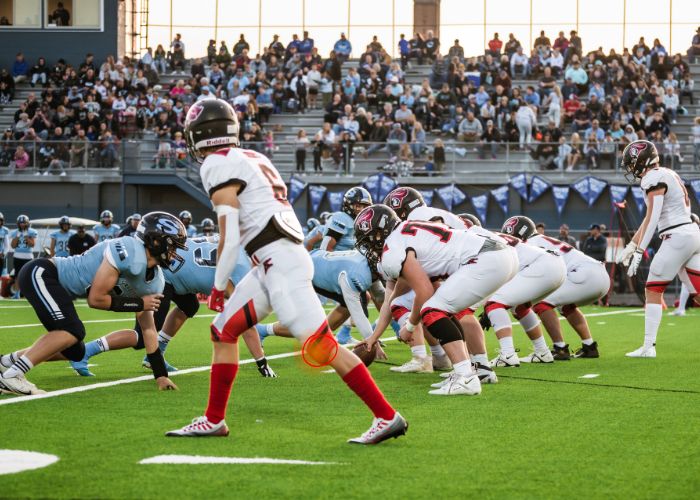Baseball Injury Specialist

If you are an athlete dealing with hip pain, limited motion, or symptoms similar to Sean Murphy’s, don’t wait for it to worsen. Dr. Ronak Mukesh Patel specializes in diagnosing and treating hip labral tears and other athletic hip injuries, helping patients return to peak performance with confidence. Schedule a consultation to get expert guidance and a clear path to recovery. Dr. Patel, orthopedic sports medicine specialist, treats patients from Sugar Land, Pearland and the Houston, Texas areas who have experienced a sports injury. Contact Dr. Patel’s team today!
The recent news that Braves catcher Sean Murphy will undergo season-ending surgery to repair a labral tear in his right hip has sent ripples through the baseball world. Murphy’s hip trouble, which reportedly had been bothering him intermittently for as long as three years, finally reached the point where surgery was the only viable option.
While the Braves have optimistically pegged his recovery at around four months, understanding exactly what a hip labrum tear is, and what the repair procedure entails, is important for both fans and fellow athletes. As an orthopedic surgeon, here’s how I see this injury and Murphy’s path back to the field.
What Is a Hip Labrum Tear?
The hip joint is a remarkable structure: a ball-and-socket joint where the femoral head (ball) fits into the acetabulum (socket). Lining the rim of that socket is a ring of cartilage called the labrum, which acts as a seal to keep the joint stable, cushions the forces across it, and helps maintain smooth movement. In Murphy’s case, an MRI revealed a tear in that labral tissue.

What caused Sean Murphy’s hip labrum tear?
Since I haven’t had the opportunity to review Murphy’s MRI, my educated guess would be that his hip labrum tear stems from repetitive stress that occurs every time he moves from a deep catcher’s squat to full vertical standing, while rotating his hips and throwing the ball. Baseball catchers are prone to this type of tear due to the position of the hip in a deep squat. This kind of injury can happen from repetitive stress, wear and tear, or even a subtle bony abnormality that causes impingement and is called Femoroacetabular Impingement or FAI.
Over time, and especially in athletes like Murphy who place tremendous demands on their hips, a labral tear can lead to pain (often in the groin or front of the hip), catching or clicking sensations, reduced range of motion, and ultimately performance decline.
For a professional baseball catcher like Murphy, who spends so much time in a deep squat and trains explosively, these symptoms could progressively undermine both comfort and consistency behind the plate. Despite playing through the pain, it’s not surprising that the tear worsened, eventually reaching a point where surgery became necessary.
Is it possible to play baseball with a torn hip labrum?
Reportedly, Murphy has been having hip pain for the last 3 years. And yes, it’s possible to play baseball with a torn hip labrum. Many athletes do so for months or even years. A labral tear can cause pain, stiffness, reduced hip rotation, and mechanical symptoms like catching or clicking, all of which can subtly erode performance over time. Murphy might have had to compensate with altered mechanics, which can lead to secondary injuries or worsening symptoms. While temporary relief through therapy, injections, or modified activity can help some athletes remain on the field, a significant or symptomatic tear may progress, eventually making high-level play difficult. For long-term function and durability, especially for positions like catcher or pitcher, proper diagnosis and, in many cases, surgical repair provide the best chance for a full return to peak performance.
How are hip labrum tears repaired like Sean Murphy’s case?
I typically repair a torn hip labrum typically using hip arthroscopy which is a minimally invasive surgical technique. We utilize the postless technique with a specialized arthroscopy table. Through small incisions in the hip, I insert a tiny camera (arthroscope) and use specialized instruments to assess the damaged labrum and address the underlying impingement.
Depending on the severity of the tear, I would determine which of the following hip labrum repair strategies to use:
- Hip labrum repair: When possible, I will suture the torn labrum back to the bone. This preserves the labral tissue and restores its sealing function in the joint, which is key for long-term joint health and stability.
- Hip labrum reconstruction: If the labrum has incurred significant damage, I may use a tissue graft to reconstruct the hip labrum. The tissue graft is measured to fit within the socket of the acetabulum and then fastened to the native tissue with special surgical anchors secured within the bone. Surgical reconstruction aims to restore the original suction seal function of the hip labrum to improve hip joint stability.
- Debridement: If the hip labrum tear had degenerated to the point it is not repairable, I will have to debride, or trim off the parts of the labrum that may be catching. However, the trend in recent years favors repair over removal whenever feasible, because repairing the labrum better supports joint mechanics, especially in athletes.
How long will Murphy’s recovery from hip surgery be?
After surgery, Murphy can expect a structured rehabilitation program. Initially, the focus is on protecting the repair and gradually regaining motion. As he progresses, strength and sport-specific training follow. Considering his position, his rehab will need to account for the intense demands of catching, such as deep squatting, lateral movements, and rapid transitions. The athletes I operate on usually follow a personalized rehabilitation protocol, tailored to their specific needs. In general they will have the following phases:
- Phase 1: Protection and Mobility (Weeks 0–4)
- Immediately following surgery, the focus is on protecting the repaired labrum so the tissue can heal securely back to the acetabulum. Murphy will likely use crutches for the first couple of weeks, limiting weight-bearing to avoid unnecessary stress on the joint.
- Gentle, controlled passive motion exercises begin ideally the day after surgery to prevent stiffness without compromising the repair. Stationary bike work (with no resistance), core activation, and targeted soft-tissue therapy are common.
- For catchers who rely heavily on hip flexion, this period is particularly important to avoid pushing mobility too quickly. Rushing the early healing phase is one of the most common ways athletes experience setbacks.
- Phase 2: Strength and Movement Re-Training (Weeks 4–10)
- As pain decreases and mobility improves, my patient’s rehab will shift toward strengthening the glutes, deep hip stabilizers, and core. These muscles are essential for maintaining pelvic stability, a key component of squatting, throwing mechanics, and rotational power.
- When cleared, my athletes can begin low-impact functional drills, controlled balance training, single-leg work and light flexibility to regain range of motion.
- Phase 3: Return to Dynamic Movement (Weeks 10–16)
- Depending on the patient this may include rotational core exercises, light catching movements and a slow progression to squatting depth.
- Phase 4: Sport-Specific Reintegration (Months 4-6)
- My high-level athletes being integration into their sport at about the 4-6 month mark. They begin regaining hip power, endurance in the squat, rotational explosiveness (for hitting) and quick-twitch lateral movement for blocking.
Will Sean Murphy be back to catching in 4 months?
The Braves have suggested a four-month timeline, and in my experience, real-world recovery, especially for a catcher, this is reasonable. The goal is not only healing, but also restoring the patient to full sport readiness which may take longer.
Long-Term Outlook: What Fans Should Expect
The good news is that hip labrum repairs have an excellent track record in high-level athletes, particularly when the surgery is paired with correction of any underlying bony impingement. Most players return to their previous level of performance or better. For catchers, like Murphy, the challenge will be the repetitive deep flexion position. However, given Murphy’s age, skill set, and the early decision to undergo definitive treatment, his long-term outlook remains strong.








